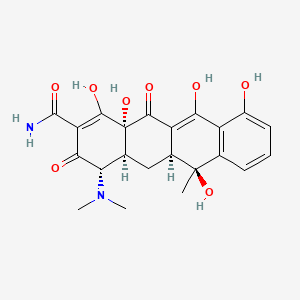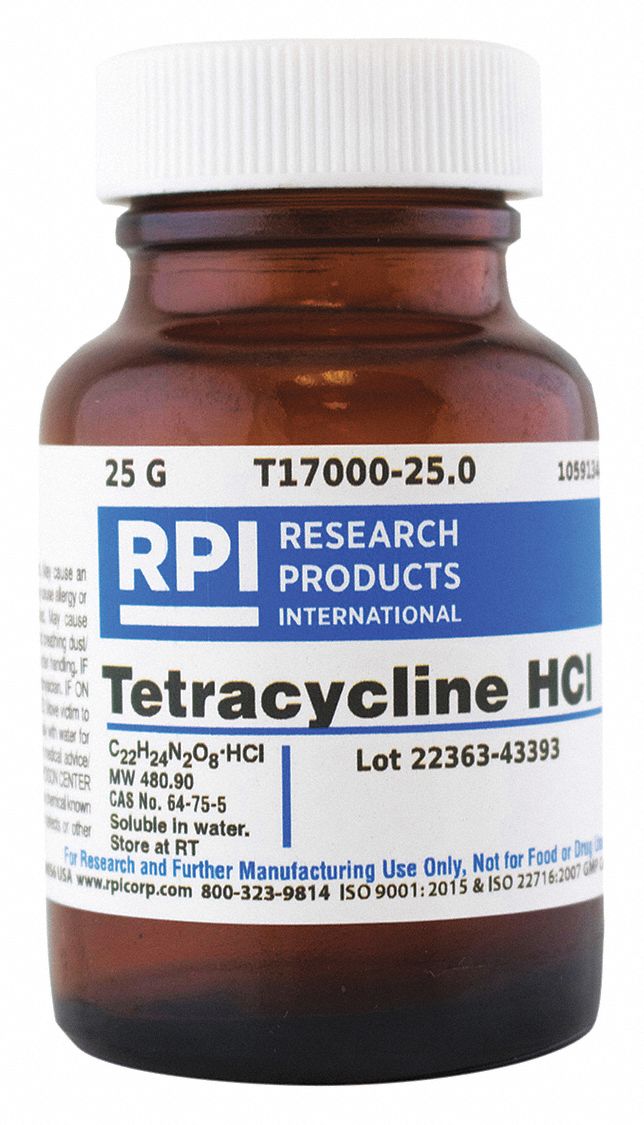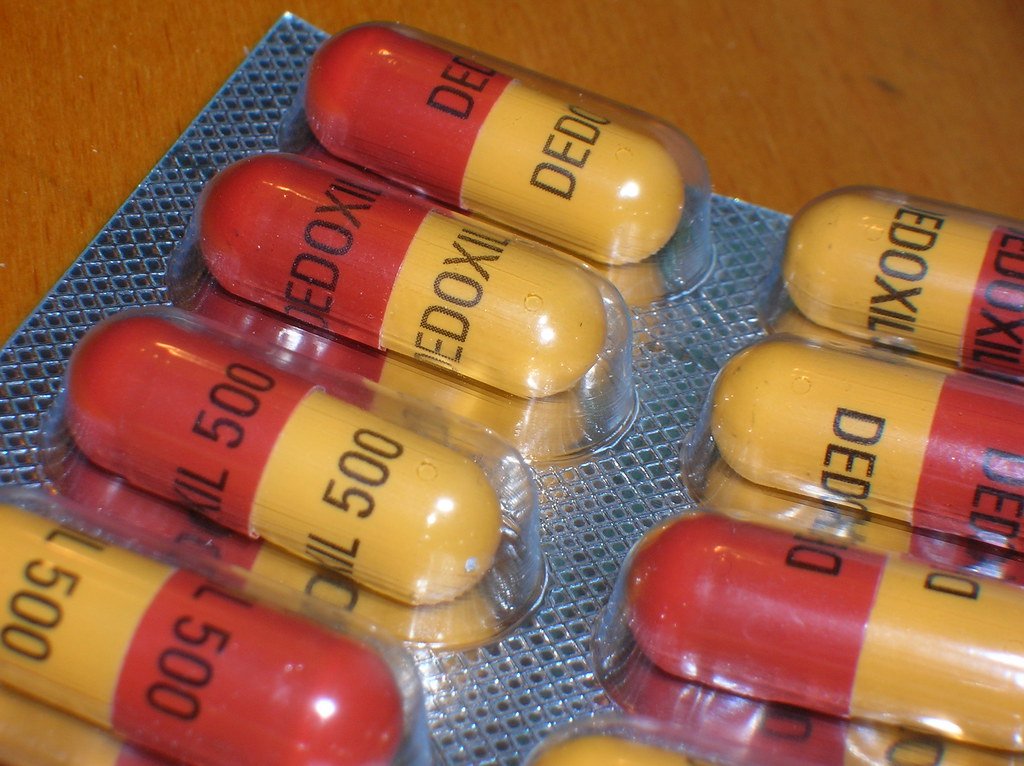| Parameters | Details |
|---|---|
| Category of Drug | Tetracycline is an Anti-Infective drug |
| Mechanism of Action 1 | Tetracycline passively diffuses through porin channels in the bacterial membrane and reversibly binds to the 30S ribosomal subunit, preventing binding of tRNA to the mRNA-ribosome complex, and thus interfering with protein synthesis. |
| Indications | Tetracycline is used as an antibiotic in 1. Rocky Mountain spotted fever 2. Typhus 3. Q fever 4. Rickettsiae pox 5. CK fever caused by Rickesiae 6. Respiratory tract infections caused by Mycoplasma pneumonia 7. Urethritis Tetracycline is also used in ophthalmic conditions, like, 1. Superficial bacterial infection of the eye 2. Mass treatment of trachoma in endemic areas 3. Prophylaxis of neonatal conjunctivitis due to Neisseria gonorrhea or Chlamydia trachomas. |
| Structure |  |
| Molecular details | Formula- C22H24N2O8 Molecular Weight- 444.4 g/mol |
| IUPAC Name | (4S,4aS,5aS,6S,12aR)-4-(dimethylamino)-1,6,10,11,12a-pentahydroxy-6-methyl-3,12-dioxo-4,4a,5,5a-tetrahydrotetracene-2-carboxamide |
| Well Known Pharmaceutical Brands | |
| Available dosage forms | Capsules/Tablets/Ointments (Store protected from light and moisture)  |
| Dose | 1. Adult- 250 mg or 500mg every 6 h, in severe infections. 2. Children- 25 to 50 mg/kg body weight, daily in three divided doses. (do not use below 8 years.) |
| Contraindications | 1. Deposition of tetracyclines in growing bone and teeth 2. Doxycycline may be used in children for treatment and post-exposure prophylaxis of anthrax when an alternative antibacterial cannot be given 3. Hypersensitivity to the tetracycline group of antibiotics |
| Pharmacodynamic properties 2 | 1. short-acting antibiotic 2. binds to the 30S ribosomal subunit, and to some extent to the 50S ribosomal subunit. 3. Prevents the amino-acyl tRNA from binding to the A site of the ribosome. 4. May alter the cytoplasmic membrane of bacteria, causing leakage of intracellular contents, such as nucleotides, from the cell. |
| Pharmacokinetic properties | 1. Bioavailability is less than 40% (IM), 100% i(IV), and 60-80% (orally). 2. Food and/or milk reduce GI absorption of oral preparations by 50% or more. 3. Volume of distribution-NA 4. Protein binding- 20 – 67% 5. Metabolism- Not metabolized 6. Route of elimination excreted in the urine and feces (in a biologically active form.) 7. Half-life- 6-12 hours 8. Clearance-NA |
| Precautions | 1. Used with caution in patients with hepatic impairment or those receiving potentially hepatotoxic drugs. 2. Prolonged use may lead to overgrowth of non-susceptible organisms 2. Lactation 3. Pregnancy |
| Adverse Effects | 1. Nausea 2. Vomiting 3. Diarrhoea 4. Hepatotoxicity 5. Pancreatitis 6. Blood disorders 7. photosensitivity 8. Ophthalmic preparations may show- Rash, Stinging, Burning |
| Pregnancy Category | D |
References:
- tetracycline mechanism of action
- tetracycline molecular details

